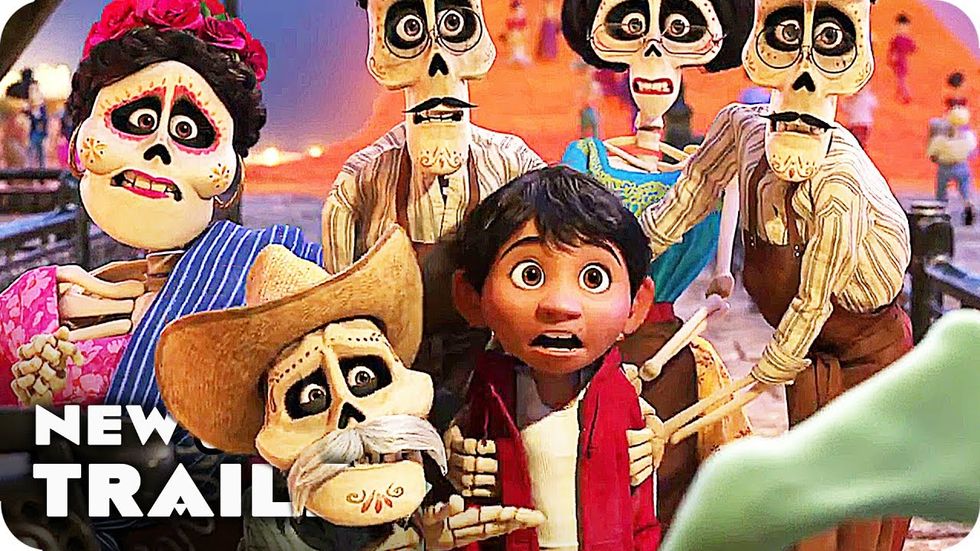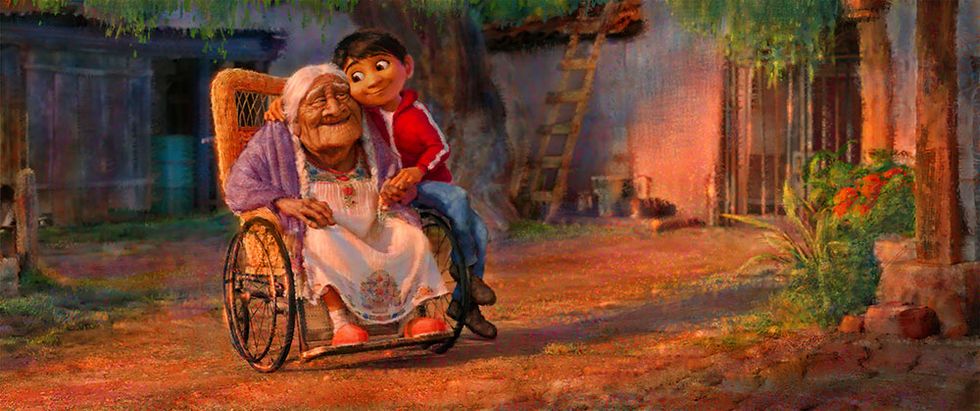"Too bad it was a boy." As a young Latina, I always awaited a princess with a tan complexion and rich culture. As an adult Latina, I sort of got it—too bad it was a boy. While Elena of Avalor was a tease on Latin culture, Disney was very on the fence on exposing whether the princess was truly of Latin descent. Even if she was, would the average viewer get a feel of any sort of Latin culture in the show? It seemed to Disney that lowering the brightness of skin complexion and putting stereotypical red lipstick on a "Latina" character would suffice, but not for me. Even with these physical stereotypes present, Elena was completely overlooked in mainstream media as a legitimate princess unlike her earlier white competitor, Elsa. After watching Coco, a Disney/Pixar film about the combination of Mexican values on the Day of the Dead, it was to my surprise that I was pleasantly moved and empathetic towards the main character, Miguel. After reading about the controversy on including a 20 minute short of Frozen’s Olaf before the film, it became apparent that, yet again, Disney lacked confidence on a Latin film doing well on its own. I went to go see Coco this past week and to my surprise, it has since been removed. While many critics praise the animation’s artwork—done by mostly white animators—it is also important to notice if Mexican or even Latin culture was appropriately represented. Coco did do a great job at showing how important familial traditions and culture is to a Latin family. From displaying fresh tamales and the teamwork of family businesses, it started to become a film I could relate to. While the protagonist, Miguel, was not the Latina princess I had come to dream of, he was portrayed as a character I could strongly relate to. A character who had to maneuver his way in finding whether his family’s satisfaction was worth risking ever having his own true happiness. A character who shared a bond with his abuela (Spanish for "grandmother") by hearing her stories and finding out how important it is to recollect memories and traditions. While I was disappointed over the sex that Disney chose to portray one of its first Latin protagonists, it was still a step in the right direction. However, Hollywood needs to trust the hands of Latin writers, producers, and animators to try to get a true message across. While there were splashes of Spanish dialogue, it was disappointing to not hear more songs sung fully in Spanish. I blame this deficiency on the lack of Hispanic representation in the writing, producing and even animating in the film—voice actors are not enough. I also shift the blame on Disney for not trusting Latin culture to fit their capitalist agenda. It is time for Disney to stop hiding behind money walls and trust rich Latin culture to be a hit on its own. It is time for Disney to stop whitewashing an already great film with a 20-minute feature to distract audiences. It is time for Disney to now show a strong, Latin women at the forefront of heroes and bring her culture along with her!
EntertainmentDec 28, 2017
Too Bad It Was a Boy: Disney's Coco
A Latina's perspective on Disney's display of its first Latin protagonist character in its latest release, Coco.
355

















